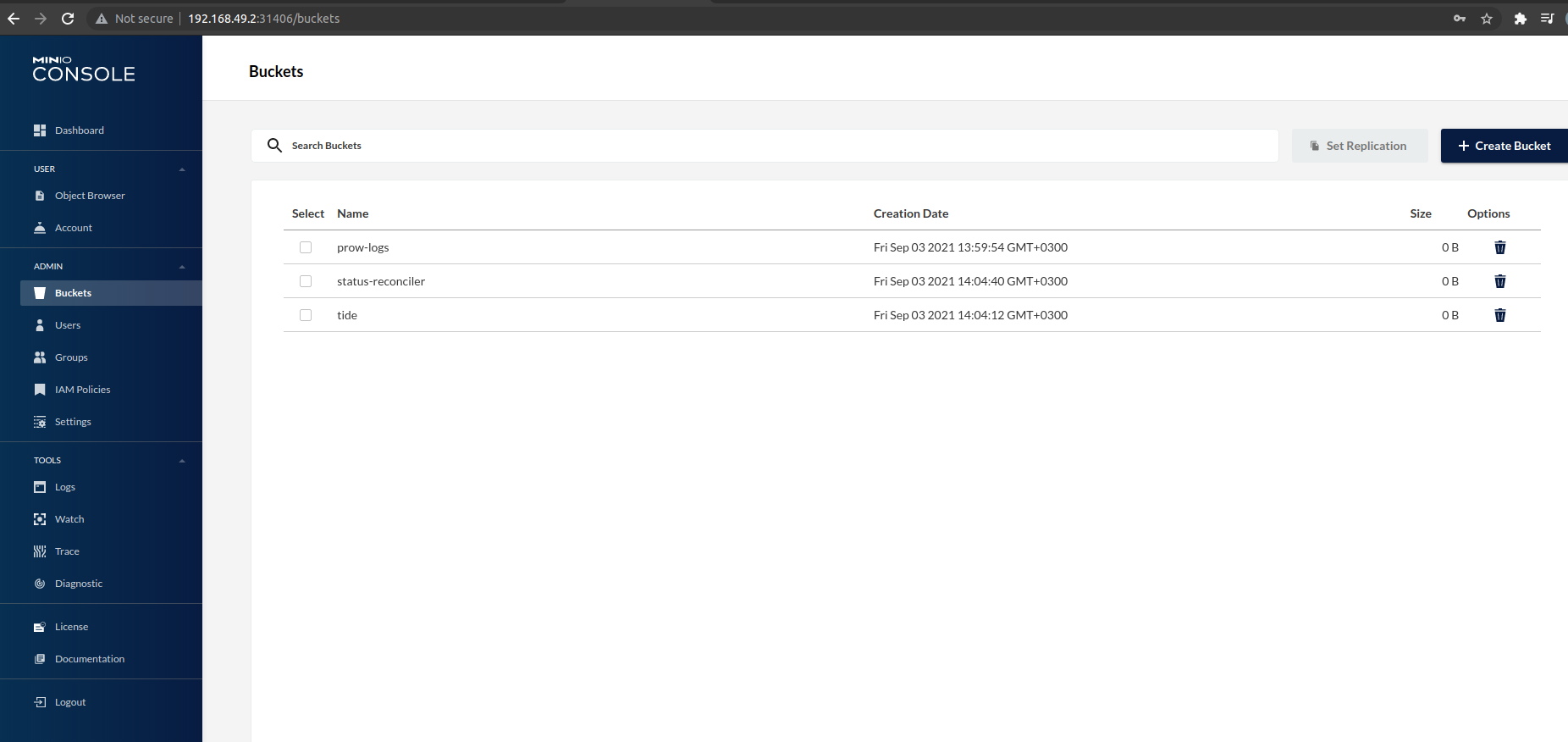Recently I had to build a Prow cluster for one of the projects I was working on. Usually you want to configure Prow to store job artifacts in some cloud storage so that people could access those logs later on. In my case, Azure cloud was the only option to go with. Unfortunately, at the time of writing this post Prow doesn't support Azure as storage backed and only GCP or AWS S3.
However, thanks to MinIO, I could build my Prow cluster and still store the job artifacts in Azure storage as I would in GCP or AWS S3. So I wanted to share how I configured my Prow cluster to work with Azure storage.
Note: This is Prow setup in a local test environment. In other words, there is no TLS, cert-manager, ingress controller configuration involved as they would in real setup.
- Github bot account
- Github organization
- Kubernetes cluster
- Azure Blob Storage Account
- Azure Blob Storage access and secret key
-
I assume you already have a local Kubernetes cluster running. I used Minikube to spin up my cluster.
-
Generate a HMAC token and create a secret from that token. We will also pass it to our GitHub org webhook configuration later on.
$ openssl rand -hex 20 > /path/hmac-token $ kubectl create secret generic hmac-token --from-file=hmac=/path/hmac-token -
Create a personal access token from GitHub bot account with the following fields checked in. Instructions for creating an access token is here.
public_repoandrepo:statusreposcope for private reposadmin:org_hookfor the github org
Now create a secret from this token
$ kubectl create secret generic github-token --from-file=token=/path/github-token
-
I've used upstream starter-s3.yaml YAML that is good enough to set up all the components of Prow. But I had to make some changes to the file because by default MinIO deployment is not meant to be used as gateway mode in that YAML but rather as server mode with local storage.
-
First I changed MinIO deployment
argspart to be as followargs: - gateway - azure - --console-address=:33333
These parameters will instruct the MinIO to run in gateway mode, with Azure being the storage backend. Also, I added a console address port so that I have a predictable port number that I will use when accessing MinIO web console.
-
Then I removed MinIO
PersistentVolumeClaimandvolumeMountsfrom MinIO deployment because we are not going to use local volume as it's configured in that YAML. -
I also removed the initContainer part from MinIO deployment.
At the end, my MinIO deployment looked like this.
$ kubectl apply -f custom_starter-s3.yaml
-
-
Since this was a test environment, I used ultrahook to get a temporary public URL.
$ ultrahook github http://192.168.49.2:31723/hook
This generated me a public URL, e.g., https://user-github.ultrahook.com which forwards all recevied events' traffic to http://192.168.49.2:31723/hook. As you probably noticed, we are forwarding all the GitHub events data to hook service running inside the Minikube cluster.
192.168.49.2- Minikube IP ($ minikube ip)31723- hook service nodePort
-
At this stage, I configured webhook of my GitHub organization to send webhook payloads (
send me everythingfor the type of the events to be sent) to https://user-github.ultrahook.com. You can find webhook instructions here. -
To get access to the web console of MinIO, I created a service of type
nodePortbased on the YAML below. I've configuredtargetPortto be 33333 which is the same port that I passed to MinIO deployment with--console-addressargument. This argument allows you to specify the MinIO console port instead of getting a random one.apiVersion: v1 kind: Service metadata: name: minio-console namespace: prow spec: type: NodePort ports: - port: 8003 targetPort: 33333 protocol: TCP selector: app: minio
Once
minio-consoleservice was running, I could open the web console via$ minikube service -n prow minio-console
And I could see the same data being stored in Azure blob storage
Note: I mentioned above that I removed initContainer part too form the starter-s3.yaml and for that reason I had to create prow-logs, status-reconciler, tide buckets manually from MinIO console. You can also do it from Azure.


Some documentation is also added in the upstream Prow getting-started guide.